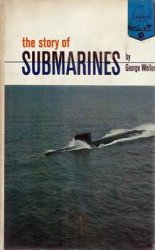A good underwater photograph can make a far greater impact than any amount of words, particularly as the underwater world is not familiar to everyone (Figure 8.3). It is necessary, at this point, to differentiate between a general photograph used to illustrate the site for the layman, and the specialized recording photograph used for making the site plans (see later). In the former case, the composition needs to show a particular aspect of the work that is to be illustrated. For illustrative pictures of artifacts or people working, it is essential to get close to the subject. A wide-angle lens is ideal for this type of work because it allows an enormous depth of field, enabling a close-up photograph of a small artifact to be taken with the diver completely in focus in the background. It is extremely good for composition and, at the same time, achieves a clear, crisp image of the object. Again, the photographer needs to always be in front of the subject as there is a

Figure 8.3 Good underwater pictures are invaluable for illustration.
Tendency to have rear views of divers rather than full frontals if one is not conscious of the problem.
Before embarking under water, it is necessary to work out the type of photographs required and ensure that the people who will be working under water understand what is wanted. It is important that other diving members be made aware of the main principles of underwater photography as they may be co-opted at times into the photograph to act as a scale or to hold an artifact. For example, there is a need to understand composition and that an object should be held close to the face when being photographed; otherwise, there will be two opposing centers of interest, the face and the object, on either side of the frame. It is useful to experiment with different configurations (on land) of a model and the object using a wide-angle lens. In this way, it is possible to work out standard arrangements: object in front of face or at one side or the other. Inevitably, one will find that the most pleasing composition will be with an object held a few centimeters from the face. It is necessary to be cautious when using the very wide angle lenses because of the effects of perspective distortions. It is also worth remembering, that when photographing work under water, it is not particularly interesting to see divers with their heads down and their backsides up. It is more engaging to have them doing something while facing the camera. Each dive will have a general photographic objective which will be fairly obvious in terms of what is happening within the work pattern of the day. If, for example, the job for the dive of the day is surveying a single object, then the photographer will have to try and cover the whole operation from beginning to end. If a repetitive job is the order of the day, then it will be necessary to try and cover the work at various points in the operation.
On sites where visibility is reduced, it may be necessary to arrange special photographic dives. It is particularly difficult to photograph in these conditions because other divers inevitably stir up sediment as they work. The slightest movement of a fin on a site where there is fine silt, coupled with no current, can destroy a whole photographic session. It is therefore advisable to arrange photographic dives to coincide with the period when the water is the clearest, or to ensure that if others are to work during a photographic dive they are experienced and are aware of the problems. It may also be that there are certain times over a number of days when the water can become very clear like during a high-water spring tide. It is important to plan extensive coverage during these periods because the improved water clarity will provide better quality photography and help in the interpretation.
Many archaeologists face a moral dilemma in considering “staged” photographs of artifacts under water. The purists hold that a photograph must illustrate the true world and that to fake a shot is misleading. Provided that there is no danger to the artifact (and in many cases there is none), it is often more efficient to take a group of objects back down onto the site in controlled conditions where a better coverage can be made than at the time of discovery. Taking into consideration the conservation problems, a time may be selected when the water clarity is good, work can be stopped so that the sediments are not disturbed, and divers can be posed to re-enact the discovery. It is impractical to have a photographer on all dives to cover every possible eventuality. An alternative is to halt the operations and get the photographer down to cover the situation when a “find” is made, but in many cases this is difficult. By selecting the time and place to take a general photograph, a number of objects can be covered in one operation. However, such photographs, can have a staged look and care is required to make them look as natural as possible. If the results then provide a photograph that enables the archaeologist to illustrate the type of work being carried out, or to promote the project through sponsorship or fundraising, then, provided the artifact does not suffer, the process is more than justified.




 World History
World History









